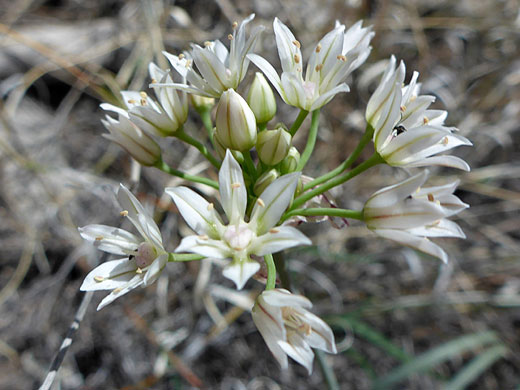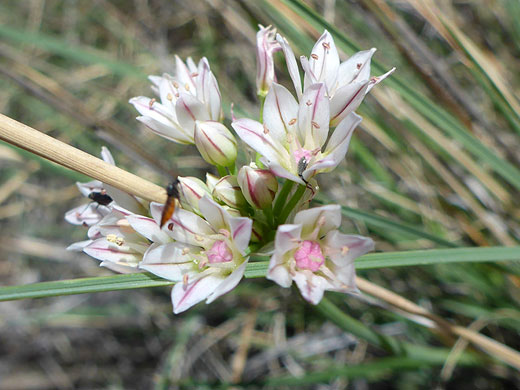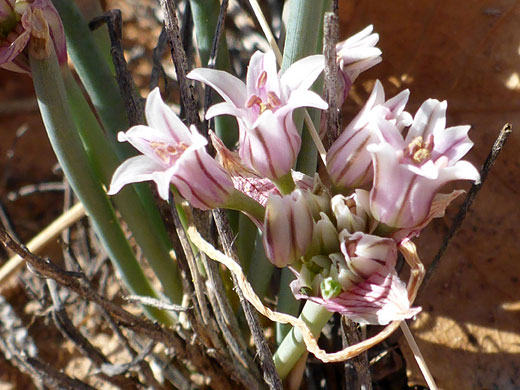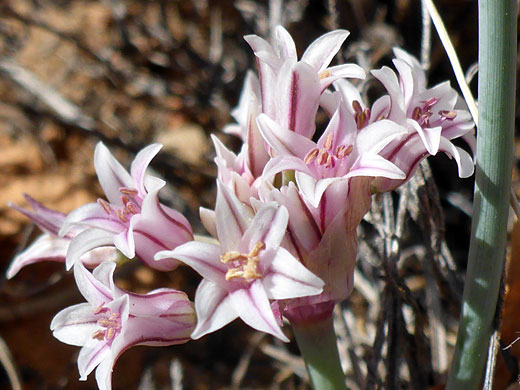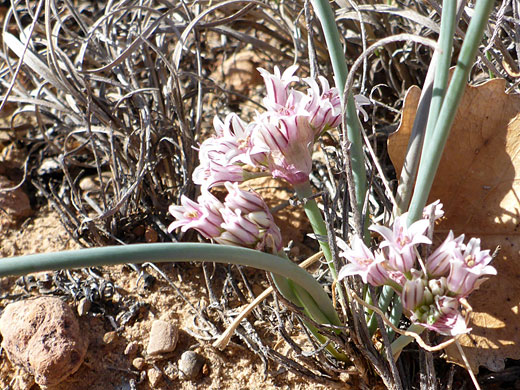
White-pink petals of allium macropetalum, along the trail to Fort Bowie National Historic Site, Arizona
Common names:
Largeflower onion, desert onion
Family:
Scientific name:
Allium macropetalum
Main flower color:
Range:
Most of Arizona and New Mexico, southeast Utah, southwest Colorado and far west Texas
Height:
Low; up to 6 inches
Habitat:
Arid grasslands and hillsides; up to 8,000 feet
Leaves:
Green, long (6 inches) and thin; half-cylindrical (semiterete) in cross-section
Season:
March to June
Allium macropetalum produces typically small but attractive bell-shaped flowers, mostly light pink but with a distinct, dark pink or purple vertical stripe along the middle. Each flower has 6 tepals, and they occur in clusters (umbels) of between 10 and 20 heads. Tepals are lanceolate in shape, and approximately equal in size. Tepal tips may be pointed or obtuse. Anthers are yellow or purplish.
This onion can form extensive colonies, sprouting from a spreading root system. Like most allium species, the plant produces edible bulbs, raw or cooked. Favored habitats tend to be drier and less wooded than for many other species, and the plant is found across a wide area, in grassy or rocky environments.
This onion can form extensive colonies, sprouting from a spreading root system. Like most allium species, the plant produces edible bulbs, raw or cooked. Favored habitats tend to be drier and less wooded than for many other species, and the plant is found across a wide area, in grassy or rocky environments.
All Contents © Copyright The American Southwest | Comments and Questions | Contribute | Site Map



